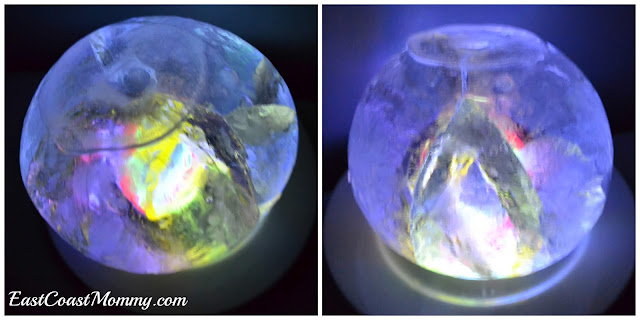Disclosure: I was given Maker Lab books from DK books in exchange for my truthful review. Opinions in this blog are (as always) 100% my own. My boys really did love these books! (Also, I have included Amazon affiliate links in this post. If you purchase a book, I will get a small commission, at NO extra cost to you.
Recently, DK books sent my boys three "Maker Lab" books, and this weekend, I let my boys check them out. They immediately came up with a list of science experiments and projects that they want to do. I think these books are going to keep us pretty busy over their summer break!
Eventually, we came to a consensus, and we decided to start by making a glowing ice orb (inspired by the Star Wars Maker Lab book). We filled a balloon with water, left it in the fridge for 9 hours, removed it from the fridge, broke and removed the balloon, crack open the week side of the ice, poured out the water, and inserted glow sticks. We went into a dark room, and the kids admired the awesome glowing orb we made.
Here it is from a couple of different angles.
Then, we decided to do another experiment with our ice orb. We put it in a bowl, we poured salt over it, and we added food colouring. The rivers of colour created by the melting ice were super-cool.
We even looked at it in a dark room with a flashlight shining up through it.
I know my boys will be making a lot of things from these books this summer. They are especially excited about the Star Wars Maker Lab, but all three books are filled with wonderful projects.
I seriously encourage you to check out these kid-friendly science/ activity books. They really will get your kids reading and excited about about learning.
Check out this cool projector my 12 year old made using a couple of boxes, a dollar store magnifying glass, and some duct tape.
How are you preventing the "summer slide" while the kids are on vacation this year? These Maker Lab books will educate AND entertain them... and it doesn't get much better than that!
♥
Gina (aka East Coast Mommy)














































